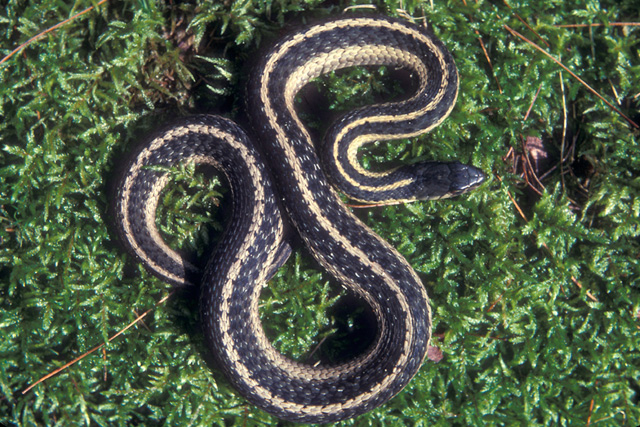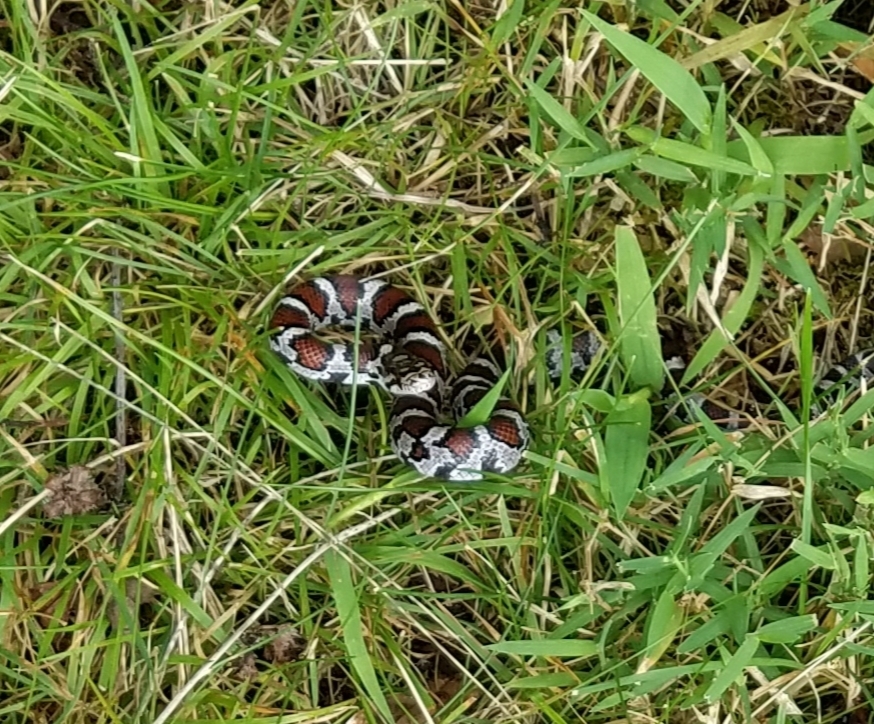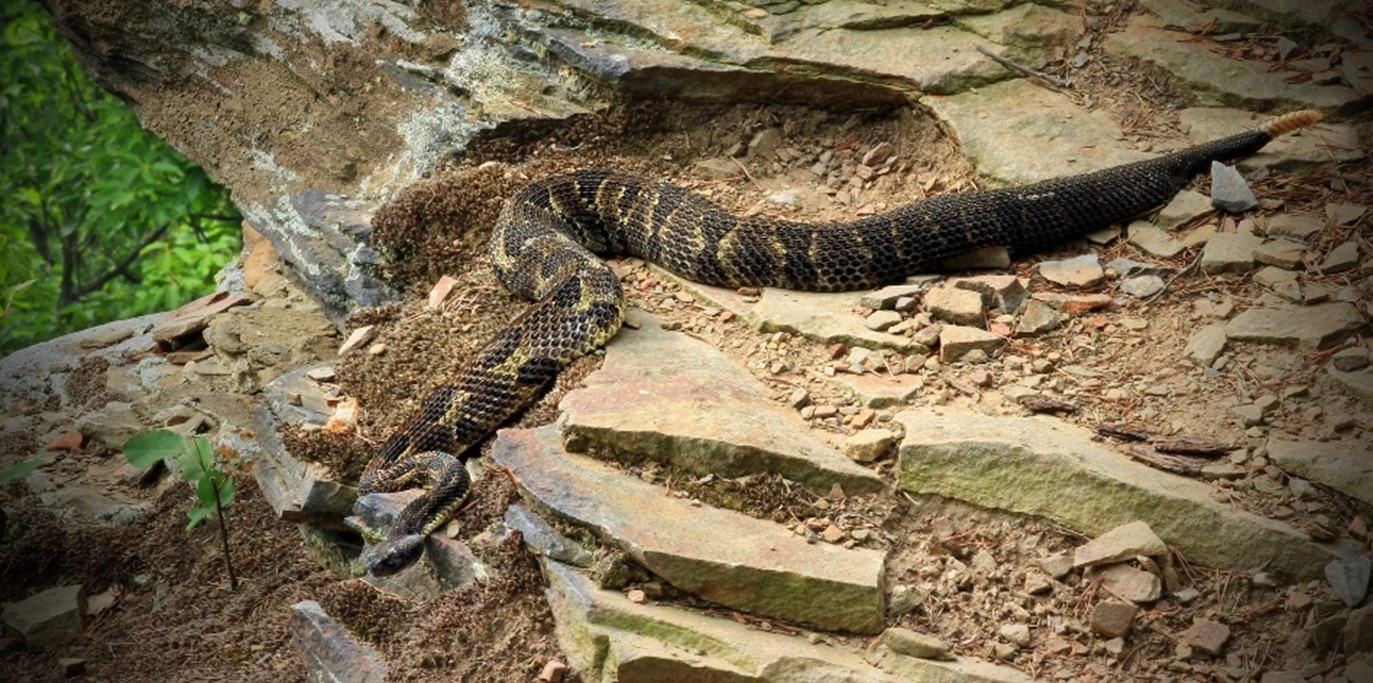Blog

#bioPGH Blog: Snakes of Pennsylvania
 A resource of Biophilia: Pittsburgh, #bioPGH is a weekly blog and social media series that aims to encourage both children and adults to reconnect with nature and enjoy what each of our distinctive seasons has to offer.
A resource of Biophilia: Pittsburgh, #bioPGH is a weekly blog and social media series that aims to encourage both children and adults to reconnect with nature and enjoy what each of our distinctive seasons has to offer.
This past weekend, I was walking my two new puppies at a county park on that delightfully warm Sunday, when out of the corner of my eye, I noticed a bit of movement “flickering” off the trail. With the puppies handed off to my husband, I could focus on where the movement was coming from, and I saw a tiny brown snake slithering through dried leaves, its smooth scales seeming to flicker through gaps in the brown, crunchy foliage.
My ephemeral little friend, most likely a Dekay’s brown snake (Storeria dekayi, also called the Northern brown snake) is one of 21 species of snakes found in Pennsylvania.
Eastern worm snake—Carphophis amoenus
Kirtland's snake—Clonophis Kirtlandii
Northern black racer—Coluber constrictor
Northern ringneck snake—Diadophis punctatus edwardsii
Eastern ratsnake—Pantherophis alleghaniensis
Eastern hognose snake—Heterodon platyrhinos
Eastern kingsnake—Lampropeltis getulus
Eastern milksnake—Lampropeltis triangulum
Northern water snake—Nerodia sipedon
Rough green snake—Opheodrys aestivus
Eastern smooth green snake—Opheodrys vernalis
Queen snake—Regina septimvittata
Northern brown snake—Storeria dekayi
Northern redbelly snake—Storeria occipitomaculata
Shorthead garter snake—Thamnophis brachystoma
Eastern ribbon snake—Thamnophis sauritus
Eastern garter snake—Thamnophis sirtalis sirtalis
Earth snake—Virginia valeriae
Northern copperhead—Agkistrodon contortrix mokasen (venomous)
Timber rattlesnake—Crotalus horridus (venomous)
Eastern massasauga—Sistrurus catenatus (venomous)
Going about daily life in Allegheny County, we are most likely to spot the bolded snakes on this list. If you’ll remember the city park snake confusion last summer, that was an eastern ratsnake. The running (or slithering?) joke about this species is that if you catch yourself wondering how did that snake get there? it’s probably a ratsnake.
Eastern ratsnake, sometimes also called black ratsnake; Richinpequea CC-BY-SA-3.0.
Many of us regularly spot garter snakes in and around our yards, like this one below. There is quite a bit of variation to garter snake coloration, though. Check out PA Herps for more examples!

Garter snake, PA Fish and Boat Commission
And I’ve noted a number of juvenile snakes around my backyard, like this eastern milksnake that my chickens found (don’t worry, he was shuttled to safety.)

Eastern milksnake
If you have ventured towards the Laurel Highlands, you may have encountered the most recognizable of our venomous snakes, the timber rattlesnake. Though distinctly more docile than their western cousins, the diamondback rattlesnake, the best approach with any snake is always to leave it alone. If they bite, it’s because they are afraid of us.

Timber rattlesnake; image credit Nicholas_T, CC-BY-2.0
Even though the fear of snakes runs understandably deep in most humans (and it’s possibly innate rather than learned), the majority of Pennsylvania snakes are harmless at worst and vital to our shared ecosystems at best. Afterall, snakes help manage rodent and even some insect populations, which means they both help balance food webs and help us in managing pests. Also, in a counter-intuitive twist, snake venoms are also a focus for therapeutics. When the chemical cocktail of snake venoms are broken down to their various individual components, there is great potential for medications for such conditions as blood pressure, arthritis, and even cancer.
Every wild neighbor plays an important role in its community, whether it's cute and fuzzy or scaly and potentially unsettling to us. Defiitely put your own safety and that of children and pets first when you're in area known to have venomous snakes, but keep in mind that this is their home too. We're all neighors!
Connecting to the Outdoors Tip: As the weather warms this season, keep your eyes open for our scaly neighbors. Especially on sunny days, you may spot them basking on paths or flat areas to absorb some heat!
Continue the Conversation: Share your nature discoveries with our community by posting to Twitter and Instagram with hashtag #bioPGH, and R.S.V.P. to attend our next Biophilia: Pittsburgh meeting.
Resources
Photo credits: Wikimedia user Richinpequea CC-BY-SA-3.0 (snake climbing a tree), Judy Gallagher CCY-BY-2.0 (cover), flickr user Nicholas_T CC BY 2.0 (timber rattler), PA Fish and Boat Commission (garter snake); header, Pexels public domain


